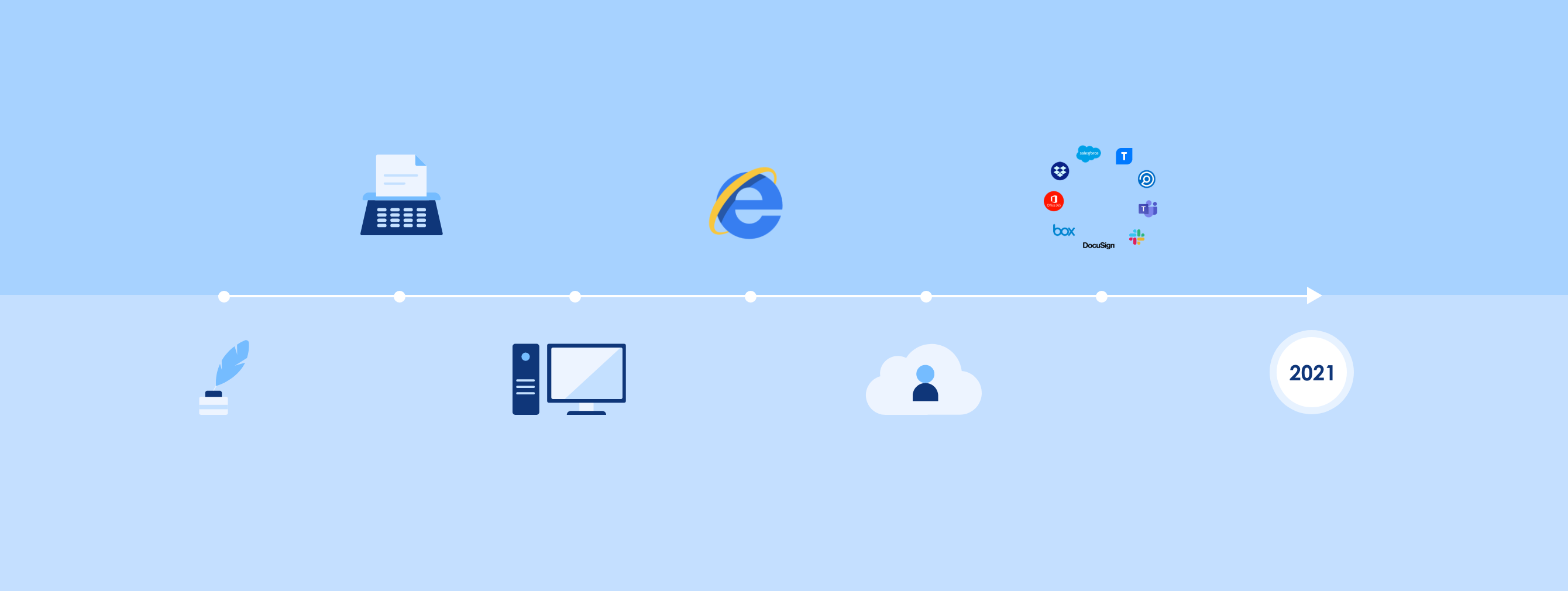Content enablement explained

Looking at the situation with enterprises and business content today, it’s clear that employees are creating more and more business content (emails, documents, presentations) – this is how business is done.
With the pressure to get content out the door quickly, companies are struggling to effectively govern the substance of the business content, whether that’s brand elements or data the employee has found and used. This situation is pointing to a marked failure of tech to deliver solutions that deliver connected content that enables compliance, allows for governance, and provides the user with an efficient and user-friendly workflow at the same time. To get the full picture of how this situation came about, it’s important to understand how content management systems evolved.
In the beginning, there was ECM
Understanding where content enablement comes from begins with enterprise content management (ECM). ECM has been widely used for many years to describe solutions for creating, storing, distributing, discovering, archiving and managing unstructured content (such as scanned documents, email, reports, medical images and office documents). It can analyze content usage to enable organizations to deliver relevant content to users where they need it using a centralized platform model.
But as businesses have evolved, ECM has failed enterprises in four main areas:
- Agility – ECM hasn’t been able to keep up with how rapidly business technology has changed
- Collaboration – Traditional ECM fails to take into account the new, collaborative way of working with business content
- Analytics – ECM solutions aren’t built to offer the type of analytic insight about content businesses need to ensure content does its job to drive business results
- Innovation – An overall lack of new ideas has slated ECM in the back seat while others paved a new path for enabling business content
Even analysts are looking for a new answer
In recent years, even analyst firms like Gartner and Forrester pronounced ECM was the past and looked toward new solutions for handling business content such as content services platforms or content platforms. This reflected a perceived change in organizational needs regarding content, making it less content-oriented (storage-focused) and more service-oriented (measuring how employees used content). But these changes still only captured part of the picture.
Where we are today: inefficiency and frustration with content creation
As the fast growth in technologies – including personal tech – continued apace, organizations were pushed to shift rapidly with growing employee needs for better and more efficient ways to work. This digital transformation wave took on new urgency when the global pandemic of 2020-2021 forced the agenda to accommodate remote working with almost zero notice.
With the frustration of working and living in the same space, focus on the user workflow was highlighted more than ever before. Inefficiencies in the enterprise tech stack in terms of how easy (or not) it was for employees to access content they needed became a bigger source of frustration without any colleagues nearby to assist. Barriers to communication caused by remote working exacerbated frustrations as workers sought to create work of value.
This situation pointed to a failure of the existing technology stack, and indeed ECM or CSP, to make the connections between content stored in different places and bring that connected content back to the user.
Today, these stacks lack solutions that enable business content across organizations: solutions that unify the businesses’ need to centrally govern content with employees’ desire to utilize and produce content. Without these solutions, businesses risk disconnected content, which can lead to loss of compliance, brand integrity and employee productivity.
Enter content enablement
In response, Templafy is pioneering a new category in response to the missing pieces of today’s enterprise technology stack. The evolution of ECM is the category of content enablement.
Content enablement comprises the platforms and point-solution services that deliver better-performing business content by enabling more efficient and higher quality creation, collaboration, distribution, and management of content-elements across an entire organization. Content enablement solutions allow organizations to ensure content positively impacts business performance.
Over the next months and years, the content enablement category will evolve as enterprise content needs continue to shift, but one thing will remain central: with true content enablement, content is able to do its primary job for organizations: drive business.
To learn more about Templafy’s journey to becoming a content enablement platform, click here.



